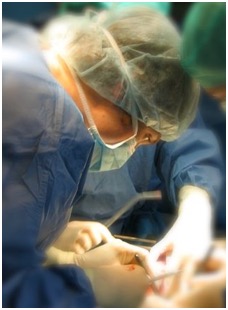Nathanael Raschzok defended thesis "summa cum laude"

Transplantation of primary human hepatocytes is a promising approach in certain liver diseases. For visualisation of hepatocytes during and following cell application and the ability of a timely response to potential complications, a non-invasive modality for imaging of the transplanted cells has to be established. The aim of his studies was to label primary human hepatocytes with micron-sized iron oxide particles (MPIOs), enabling the detection of cells by clinical magnetic resonance imaging (MRI). The feasibility of preparing MPIO-labelled primary human hepatocytes detectable by clinical MR equipment was shown in vitro. MPIO-labelled cells could serve for basic research and quality control in the clinical setting of human hepatocyte transplantation.
He also investigated techniques for evaluation of the particle uptake via continuum source atomic absorption spectrometry (CSAAS). Porcine liver cells were labelled with MPIOs and the iron concentration of the cell samples was investigated by a CSAAS spectrometer equipped with a Perkin-Elmer THGA graphite furnace. CSAAS enabled rapid quantification of particle load from small quantities of cells without extensive preparation steps. CSAAS could be used for quality control in a clinical setting of cell transplantation.

